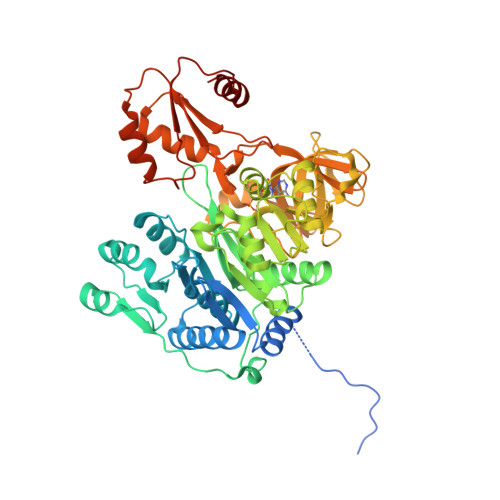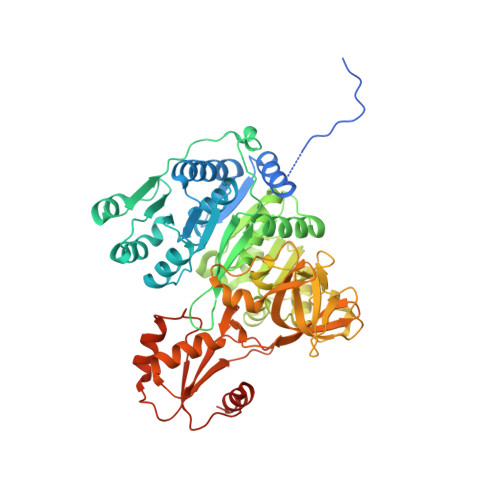Antimicrobial peptide resistance of Vibrio cholerae results from an LPS modification pathway related to nonribosomal peptide synthetases.
Henderson, J.C., Fage, C.D., Cannon, J.R., Brodbelt, J.S., Keatinge-Clay, A.T., Trent, M.S.(2014) ACS Chem Biol 9: 2382-2392
- PubMed: 25068415
- DOI: https://doi.org/10.1021/cb500438x
- Primary Citation of Related Structures:
4OXI - PubMed Abstract:
The current pandemic El Tor biotype of O1 Vibrio cholerae is resistant to polymyxins, whereas the previous pandemic strain of the classical biotype is polymyxin sensitive. The almEFG operon found in El Tor V. cholerae confers >100-fold resistance to polymyxins through the glycylation of lipopolysaccharide. Here, we present the mechanistic determination of initial steps in the AlmEFG pathway. We verify that AlmF is an aminoacyl carrier protein and identify AlmE as the enzyme required to activate AlmF as a functional carrier protein. A combination of structural information and activity assays was used to identify a pair of active site residues that are important for mediating AlmE glycine specificity. Overall, the structure of AlmE in complex with its glycyl-adenylate intermediate reveals that AlmE is related to Gram-positive d-alanine/d-alanyl carrier protein ligase, while the trio of proteins in the AlmEFG system forms a chemical pathway that resembles the division of labor in nonribosomal peptide synthetases.
Organizational Affiliation:
Department of Molecular Biosciences, ‡Department of Chemistry, §Institute of Cellular and Molecular Biology, The University of Texas at Austin , Austin, Texas 78712, United States.



















